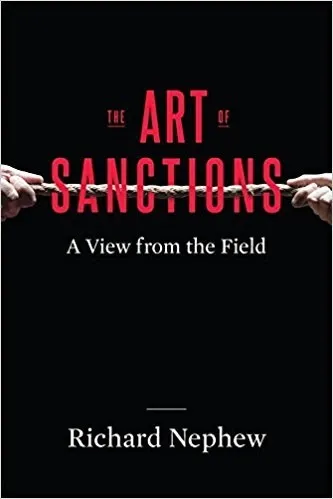The Art of Sanctions: A View from the Field

با انتخاب ستارهها به این کتاب امتیاز دهید.
در حال خواندن
1
خواندهام
2
خواهم خواند
5
Economic sanctions are intended to be a nonmilitary means used by states to force their prerogatives on other states, entities, and individuals. Yet while sanctions have been increasingly used as a foreign policy tool, they are ineffective if executed without a clear strategy that is responsive to the nature and changing behavior of the target. In The Art of Sanctions, Richard Nephew offers a much-needed practical framework that focuses not just on the design of sanctions but, crucially, on how to decide when sanctions have achieved maximum effectiveness and how to improve them along the way. Nephew--a lead participant in the design and implementation of sanctions on Iran--develops guidelines for interpreting targets' responses to sanctions based on two critical factors: pain and resolve. The efficacy of sanctions lies in the application of pain against a target, but targets may have significant resolve to resist, tolerate, or overcome this pain. Understanding the interplay of pain and resolve is central to using sanctions successfully and humanely. With attention to these two key variables, and to how they change over the course of the sanctions regime, policy makers can pinpoint when diplomatic intervention is likely to succeed or when escalation is necessary. Focusing on lessons from sanctions on both Iran and Iraq, Nephew provides policy makers with practical guidance on how to calibrate pain and measure resolve in the service of strong and successful sanctions regimes.
یادداشتهای مرتبط به The Art of Sanctions: A View from the Field